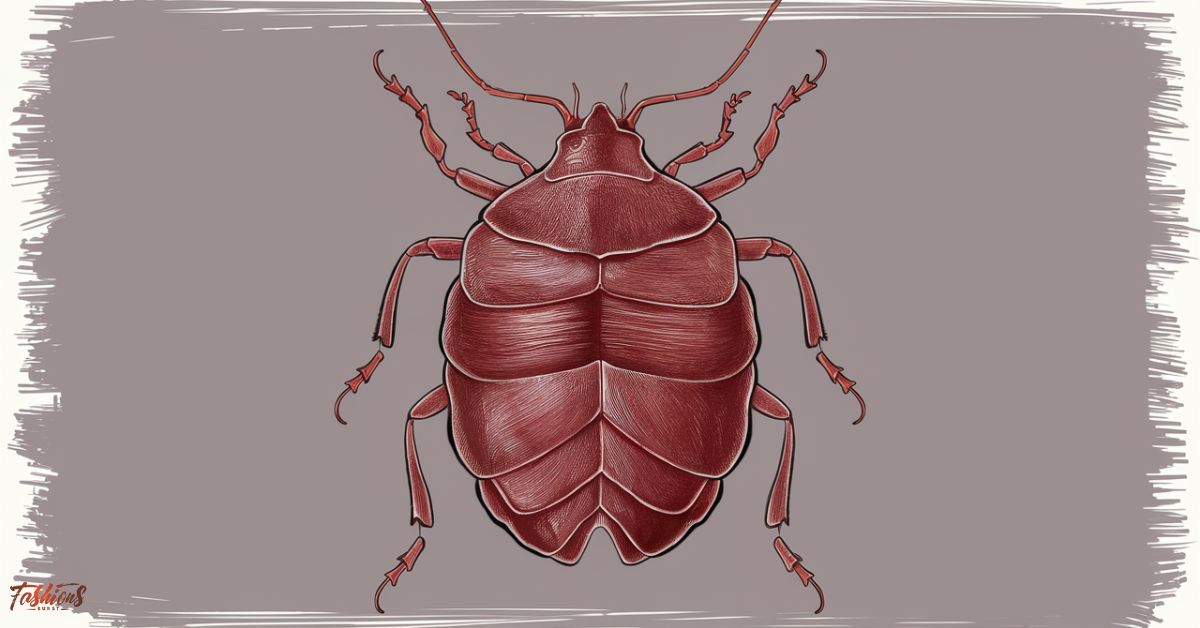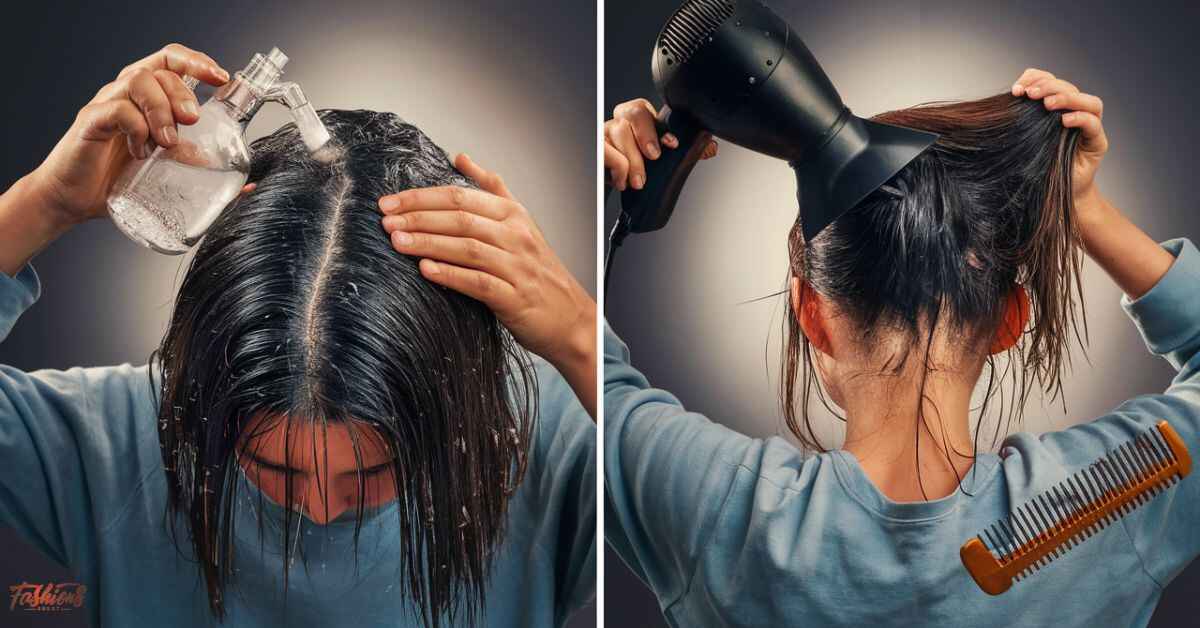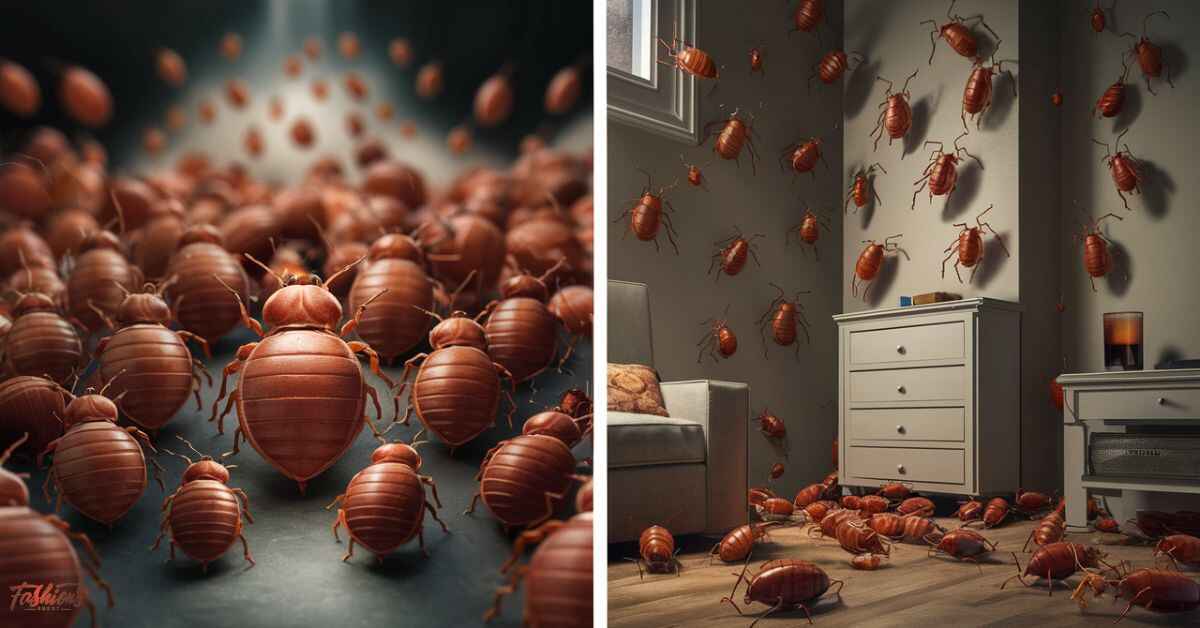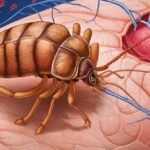Finding bugs in your hair is one of those spine-chilling experiences that can send shivers down your spine. Your first thought might be, “Oh no, bed bugs!” But can these pesky pests really take up residence in your luscious locks?
The good news is, while it’s possible for a bed bug to crawl onto your scalp, it’s highly unlikely they would choose to live there long-term. Let’s explore why.
Bed Bug Anatomy
Compared to other hair-dwelling parasites, a bed bug’s anatomy simply isn’t suited for settling into your strands:
- Flat, Oval Bodies: Designed to tuck into narrow gaps and cracks, not grip hair shafts.
- ️ Six Legs, No Grasping Appendages: Lacking specialized claws, hooks or sticky pads to cling.
- No Antennae/Sensory Projections: To help navigate and embed within thick hair and fur.
Contrast this to lice, which have curved claws, grasping appendages and long antennae – all evolutionary traits to latch securely onto strands and burrow towards the scalp.
Can Bed Bugs Live Anywhere on Your Body?
In short? No, bed bugs typically avoid living directly on humans altogether. Their only real interaction with us is their need for a blood meal every few days.
After feeding, they swiftly retreat to their remote harborage areas until hunger strikes again. Any persistent bed bugs on your body likely won’t last long – they’ll be brushed, washed or picked off during normal daily activities.
You May Not See Bed Bugs on Your Skin
With their tiny, seed-sized bodies and reddish-brown hues, bed bugs can be maddeningly difficult to spot with the naked eye – even when crawling across exposed skin.
Their flat profiles also allow them to seamlessly blend into fabric folds and wood grains where they nest.
You may not realize you have an infestation until other signs become evident, such as:
- Unexplained bite marks or rashes
- Bloodspots or brown stains on bedding
- A distinct, sweet musty odor from their pheromones
And even after rousing a bed bug nest, the pests can survive for several months without another blood meal. So a lack of visible bugs is no guarantee the issue has been eliminated.
Why You’re Unlikely to Have Bed Bugs in Your Hair
Bed bugs are tiny, sneaky parasites that prefer nesting in dark, undisturbed areas close to where humans sleep. Unfortunately for them, your head of hair doesn’t make an appealing habitat for several reasons:
- Light Exposure: Bed bugs shun bright, open spaces like your hair, preferring deep shadows and crevices.
- ♀️ Frequent Movement: Your head is in near-constant motion, disrupting bed bugs’ quest for a serene setup.
- Regular Bathing: These pests would likely get rinsed away during your shampoo sessions.
- High Temperatures: Prolonged heat exposure from styling tools or sunshine can kill bed bugs.
Their ideal hangouts are quiet, cozy areas around your sleeping space like:
- ️ Mattress seams and box springs
- Gaps in bed frames and headboards
- Upholstered furniture near the bed
- ️ Dressers and nightstands
So while one may wander across your scalp now and then, it won’t want to overstay its welcome.
Bugs More Likely to Appear in Your Hair
If you do find creepy-crawlies taking up residence in your mane, chances are greater they’re one of these pests built for cozying up with humans:
️ Head Lice: Miniature parasites with specialized claws to grasp hair shafts, laying eggs (“nits”) that incubate right on your scalp.
️ Scabies Mites: Microscopic mites that actually burrow into upper skin layers, potentially infesting hairy regions like the scalp.
Fleas: Blood-feeding pests that can jump from household pets onto a new human host, sometimes nestling into hair.
If you suspect having lice, scabies, or any hair-dwelling infestation, it’s wise to consult a medical professional promptly for diagnosis and treatment.
Bed Bugs Can Live on Body for Up to a Year
Though they may not inhabit hair long-term, there are reports of bed bugs surviving on the human body itself for extended periods in severe infestations.
Research indicates bed bugs could potentially live on a person for up to a year without needing to feed on blood. This durability allows them to catch inadvertent “rides” to new locations and spread.
The more common modes of transmission are through transportable objects like:
- Luggage and bags
- Secondhand furniture
- Clothing and linens
- Cardboard boxes during moves
Bed Bugs Attracted to Human Scalp
While your hair itself may not interest bed bugs, there’s no question they find human scalps quite appealing – as a source of blood, that is.
When seeking their next meal, bed bugs detect the warmth and carbon dioxide exhaled by potential hosts. Your scalp, with its array of blood vessels lying close to the surface, can be an enticing target.
However, their rudimentary biology simply isn’t equipped for settling in amongst your locks. At most, they may attempt a hasty feeding before retreating to more secluded harbors.
If you do notice bite patterns or signs of bed bug activity around your scalp, consider taking steps like:
- ♀️ Using a hot air brush or comb to dislodge any lurking pests
- Applying specialized insecticide powders or oils
- Thoroughly cleaning and vacuuming away any bed bug debris
The goal is disrupt and prevent any sustained bed bug presence before they can establish breeding grounds in your home.
What to Do About Bed Bugs in Hair
Even though it defies their nature, there’s always an outside chance a bed bug could temporarily find its way into your hair. This could happen through:
- Close contact with an infested area
- An exploratory crawl while migrating to feed
If you do discover a bug taking an unwelcome tour of your tresses, try not to panic. Take these steps promptly:
✂️ Carefully comb through with a fine-toothed comb to dislodge any pests
Take a hot shower, shampooing your hair thoroughly
Apply direct heat by blow drying on the highest setting ♀️ Use a specialized lice/bed bug removal product if available
Also, immediately launder any clothing or bedding on high heat settings and thoroughly clean any hair brushes or accessories used.
Remove Bed Bugs From Hair Immediately!
Found an unmistakable bed bug crawling across your scalp? Don’t panic, but do take prompt action!
Use a fine-toothed comb and carefully inspect your entire head to dislodge and remove any bugs or eggs present. You can also try methods like:
- Using a blow dryer on high heat to desiccate the pests
- Applying a high-proof rubbing alcohol or specialized insecticide
- Vacuuming up any bugs and debris loosened by combing
Be sure to immediately dispose of any vacuum contents after use. Thoroughly clean any combs or brushes with soap and hot water as well.
Taking these steps may eliminate isolated bugs before they can spread further. However, if you continue finding bed bugs in your hair, it likely indicates a larger infestation requiring professional extermination treatment.
Read this blog: Does Mounjaro Cause Hair Loss? Expert Review (2024)
Other Elimination Steps
Even if your hair isn’t harboring bed bugs, these resilient pests can be extremely challenging to fully eradicate from homes and belongings through isolated efforts. An integrated approach is key:
Heat Treatments: Professionals use special heaters to raise ambient temperatures high enough to kill all bed bug life stages in one treatment.
Launder Linens: Wash all exposed bedding and clothing in the hottest water possible, drying on high heat.
Inspect & Vacuum: Carefully inspect mattresses, furniture and cracks/crevices, using a vacuum to capture any bugs or eggs found.
Encase Mattresses: Special anti-bed bug covers help starve any trapped bugs over time.
⚠️ Safe Disposal: Never scatter belongings, which can spread an infestation to new areas.
Consistent, methodical effort from an experienced pest control professional gives you the best chance at complete bed bug elimination.
Bed Bug Capabilities
To understand why your hair isn’t a prime home for bed bugs, it helps to examine their innate capabilities:
- ♀️ Not Built for Human Habitats: These insects lack specific adaptations to live successfully on the human body or hair.
- Nighttime Feeders: Bed bugs only emerge from their shelters to feed briefly at night, while hosts are asleep and motionless.
- Deterred by Air Movement: A study found even light breezes and air currents spurred by human movement can deter bed bug feeding.
In short, your ever-moving, well-exposed head of hair is the complete opposite environment these pests are equipped to endure for long periods.
Bed Bug Migration
So if bed bugs clearly aren’t adapted to nesting in human hair, how do these persistent pests spread so insidiously? Their sneaky migration methods include:
Hitchhiking in luggage, clothes and furniture moved between dwellings ️ Traveling through wall joints and utility passages between units
Crawling onto a human host briefly while feeding, then dropping off elsewhere
While a stray bed bug could hypothetically end up in your hair temporarily during one of these travels, they lack the means to establish a permanent infestation there.
Don’t Let Bed Bugs Keep You Up at Night
Finding any pests in your personal spaces is understandably distressing and can lead to anxious nights worried about bites or infestations spreading.
However, with vigilance, information and the right professional assistance, you can take back control over your home environment. Begin by carefully inspecting for signs of activity and getting expert assessment at the first evidence of bed bugs.
Next, reduce future transmission risks through preventative measures like:
✔️ Thoroughly inspecting secondhand furniture before bringing inside ✔️ Carefully checking belongings after staying in hotels
✔️ Routinely monitoring mattresses and upholstered furniture
With comprehensive treatment plans and diligent preventative habits, you can sleep easy without fretting over these tenacious pests wreaking havoc.
When to Contact a Doctor
Speaking of doctors, you’ll want to book an appointment right away if:
- You have identified signs of a possible bed bug infestation in your home
- The bites are becoming infected, intensely itchy or causing severe discomfort
- You suspect the culprits could be lice, scabies mites or another infestation requiring medical intervention
Here are some telltale indicators that bed bugs may have moved into your home:
✔️ Clusters or lines of inflamed, itchy bites on exposed skin ✔️ Rusty/dark stains on bedding from crushed bug feces
✔️ Sweet, musty odor from bed bug scent glands ✔️ Molted bed bug exoskeleton shells in cracks and crevices
Left unchecked, bed bugs can rapidly multiply into a full-blown, expensive nightmare infestation. Don’t try handling it alone – seek professional help promptly.
Also read: Is Head & Shoulders Bad For Your Hair? The Truth Revealed

Of course, the ideal solution is preventing bed bug problems before they start. Scheduling routine inspections by a professional pest control company like Terminix is highly advisable.
Their trained technicians know all the crafty hiding spots to check and can detect even minor infestations using:
- Meticulous visual inspections
- Highly-trained bed bug-sniffing canines
- Monitoring tools to capture pest activity
Don’t gamble with DIY methods that may miss bed bug reservoirs. Pros use comprehensive heat treatments, targeted insecticides and proven protocols for complete eradication.
Frequently asked questions
How do you know if bed bugs are in your hair?
Check for itching, redness, or small bites on your scalp.
Where do bed bugs hide on your body?
Bed bugs typically hide in crevices near sleeping areas, not directly on the body.
Can bed bugs lay eggs in your head?
No, bed bugs do not lay eggs in hair; they prefer nesting in secluded areas.
Can bed bugs harm you?
Bed bug bites can cause itching and irritation but are not known to transmit diseases.
What kills bed bugs?
Professional extermination using heat treatments or insecticides effectively kills bed bugs.
What are early signs of bed bugs?
Look for clusters of bites, bloodstains on bedding, or a musty odor as early signs of bed bugs.
Conclusion
The likelihood of bed bugs living in your hair long-term is extremely low, as they prefer dark, undisturbed areas near sleeping spaces. Instead, pests like lice or scabies mites are more likely to inhabit hair. Regular bathing, movement, and exposure to heat make hair an unsuitable environment for bed bugs.
If you find bugs in your hair, identify them and seek appropriate treatment. For bed bug infestations at home, professional extermination is essential. Vigilance and preventative measures can help keep your home and personal spaces free of these pests.












